|
|
Post by Franklin1 on Jan 17, 2014 13:11:17 GMT 10
Andrew, that stitched joint should obviously be the other way round, considering the slope of the hatch. You would have to check that you're not getting any weepage of water into that stitched joint as the water tries to run off the hatch.
cheers,
Al.
|
|
|
|
Post by akeepsake on Jan 17, 2014 20:39:02 GMT 10
Thanks guys ! Jenno that's all it may need just want to make sure I can do the best job to make it last another 65 years. The Northane undercote and gloss coat looks like the gear too! Franklin 1 what you said about the stitching makes sense so much so I was wondering if the hatch had been turned around at some stage but on further investigation I realised that the roof had a seam as well facing the same way as the hatch ! It has never leaked and with the right sealing should hang in there! Just wondering what others have done  Can anyone give me the goss on either Northane or Bote-cote? |
|
|
|
Post by Franklin1 on Jan 17, 2014 21:07:56 GMT 10
seeshell is the "resident expert" for the Northane and Bote-Cote comparisons, although I don't know whether you are wanting info about the relative resin products, or the relative paint products. There have been people on the forum who have painted the roofs of their vans with thermashield paint, and who claim it has worked well for them. I don't know whether it is suitable for repainting over cloth coverings. I seem to remember they were using it on their fibreglass vans. I'd be wondering how much mechanical abrasion the roof cloth could withstand before it started to lose its integrity. I guess you would have to try and dull the surface so that any subsequent coats adhered to the surface properly, but you would have to be careful you didn't rub the cloth fibres too much in the process. Maybe you should just "glad-wrap" the hatch, and leave the paint coating as it is? Might be easier to recover it every couple of years with glad-wrap, and save yourself all the angst, heh heh.  cheers, Al.
|
|
|
|
Post by akeepsake on Jan 17, 2014 21:40:22 GMT 10
Glad wrap would give it a nice shine ! Lol! I think just a good wash with a scotchbrite pad would suffice to get enough bite for an undercoat Will contact Seeshell re Northane etc Thanks for your help  |
|
|
|
Post by akeepsake on Jan 20, 2014 23:05:08 GMT 10
Pulled the original annex out an WOW! it was like new ! Still had a waxy feel to it complete with draft strip Very happy with it !     Jack said he got it made wider than usual to accommodate his car ! Not sure what standard width is but this is 2500 wide !!! If anyone has any canvas in the same pattern I am after some for front window protecter etc! Cheers for now !  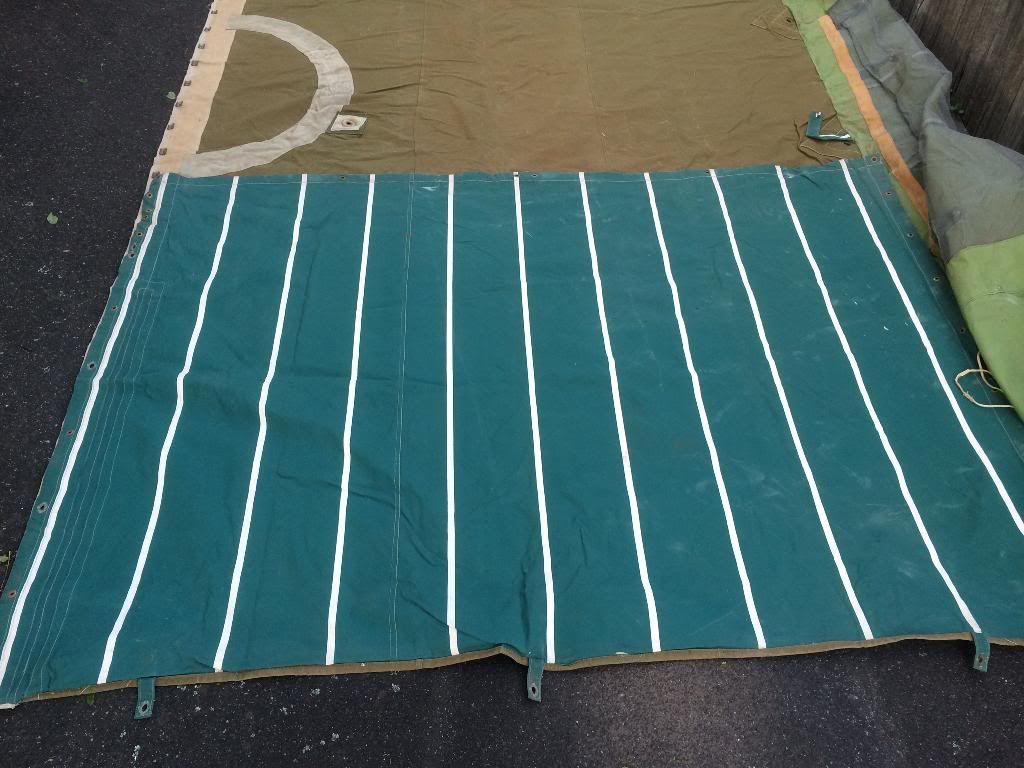 The hole near the door has a spring loaded pole that holds the annex roof away from the door top!! 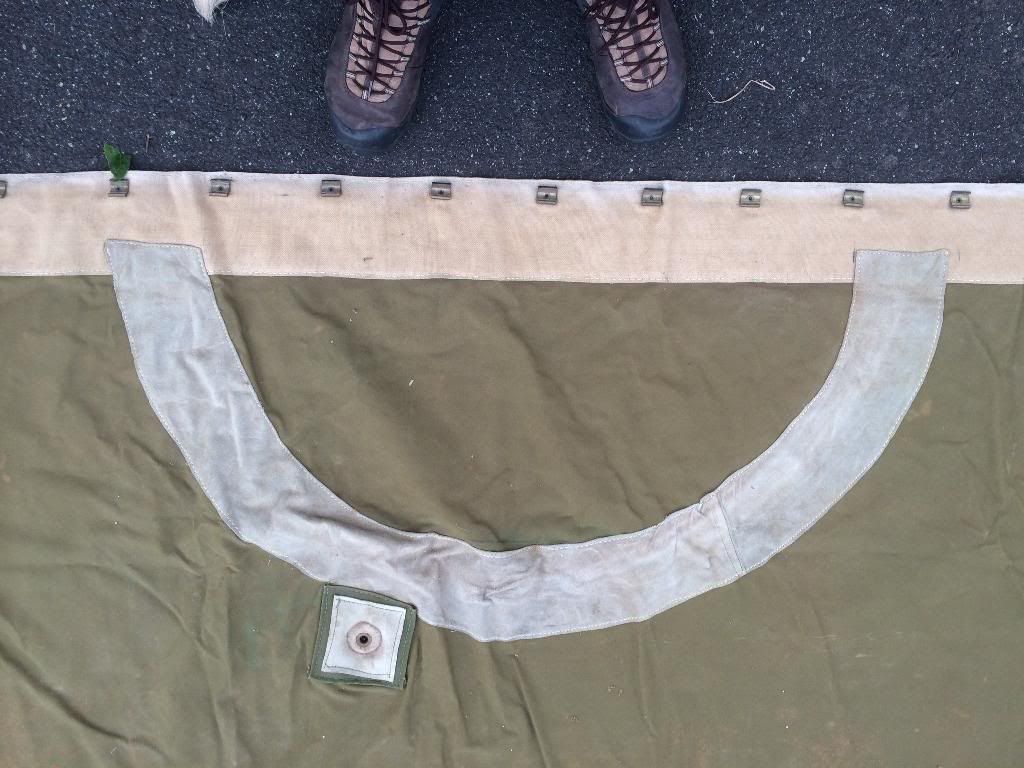 |
|
|
|
Post by hilldweller on Jan 21, 2014 6:22:27 GMT 10
Am following this thread with interest - lovely looking van  . You'd think awnings would be one of the first things to perish and I'm sure that is often the case but, as yours shows, if they're stored correctly they last forever  |
|
|
|
Post by Franklin1 on Jan 21, 2014 13:19:59 GMT 10
G'day Andrew, There's a fella on ebay who sells short lengths of canvas, but I've never seen the same colour/pattern as yours listed. I think you'd be very lucky to find anything like that around these days. At the moment, he doesn't have a great deal of stock listed, but the types of colours and patterns closest to yours would be like this one . Obviously if you buy anything from this seller, you then have to make the finished product yourself, or get a canvasmaker to do it for you. cheers, Al. |
|
|
|
Post by shesgotthelook on Jan 21, 2014 14:27:55 GMT 10
|
|
|
|
Post by shesgotthelook on Jan 21, 2014 14:39:12 GMT 10
Mark & Leanne's new/old awning has a similar style.  |
|
|
|
Post by akeepsake on Jan 21, 2014 20:59:41 GMT 10
Thanks Hildweller for your interest! The annex was actually out of the caravan sitting on a wardrobe in the same shed where the van sat for 44 years! It was covered with dust and was home to a few whitetail spiders, BIG ONES! I am amazed that it is in the condition it is ( that shed is a giant preserver) the ropes are crisp and new I would be surprised if it has been used more than a couple of times. It has pockets for the poles to slide through against the edge of the caravan so doesn't require clips down the vertical sides of the van ( haven't seen that before) I will post some more shots when I erect it! Franklin Thanks for the link re canvas! I realise it's a long shot but I actually got a vintage deck chair in the same pattern recently ! Was stoked about that! 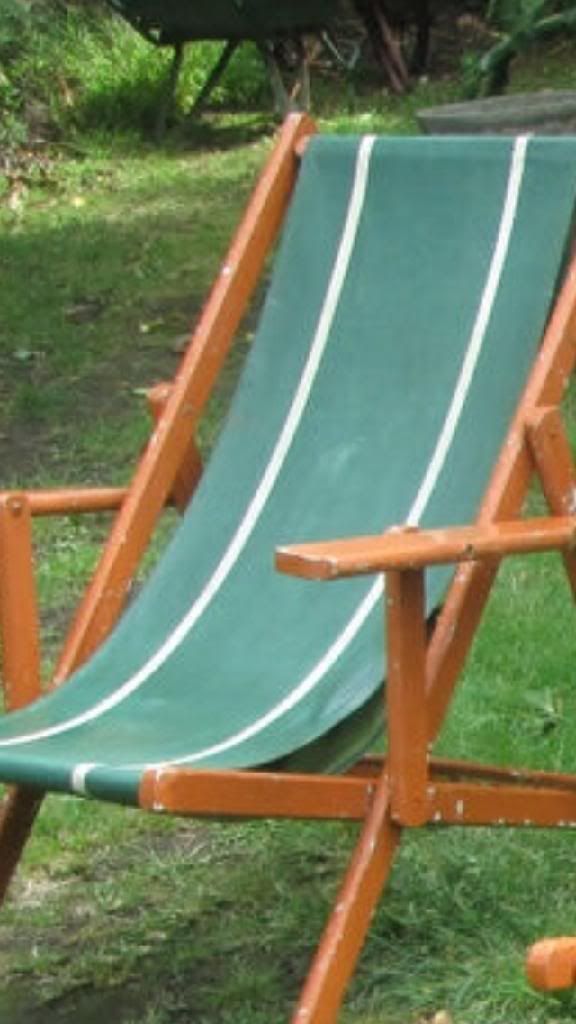 SGTL Thanks for the detective work! Maybe PCW's annex could use a couple of large openings lol! I have seen the design before and suspect it came out in the 50s as that's when Jack got it made?? Mark and Leanne's awning is very similar to my original Millard window awning . A lighter green but looks the part! Will keep eyes peeled  |
|
|
|
Post by akeepsake on Jan 29, 2014 11:19:43 GMT 10
Hi all Progress has been slow due to the old back deciding to cease to function as it should so been doing heaps of research and trawling through the forum etc . This really is a great forum and there is great info contained in its bowels! I know the new format has ticked a few off but like everything thing changes weather we like it or not .....just have to roll with the punches ! I hope it hasn't turned to many people off . Anyway I am trying to track down some fabric close to what would have been in the van I from original I have one surviving cushion which has a tapestry fabric so was hoping to find something similar Will need a fair bit as will be doing all dinette and 2x single bed etc just thought I would put feelers out as I know many have gone down this road before so we'll see how it goes. Appreciate your input Thanks again Andrew 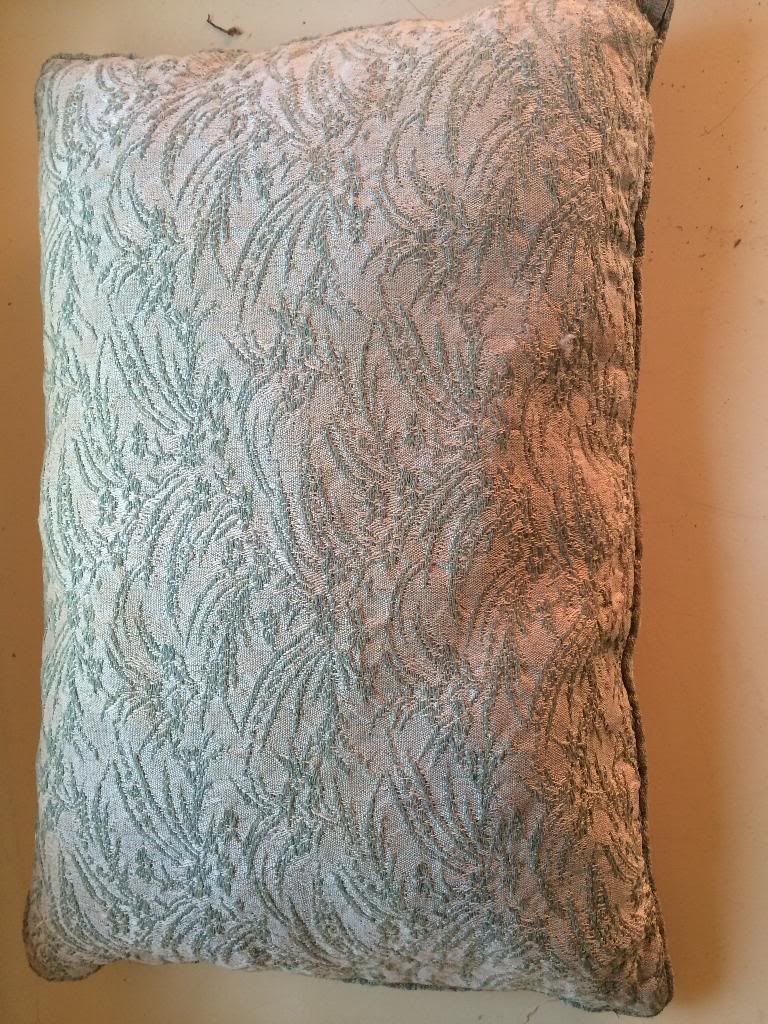 Surviving original cushion 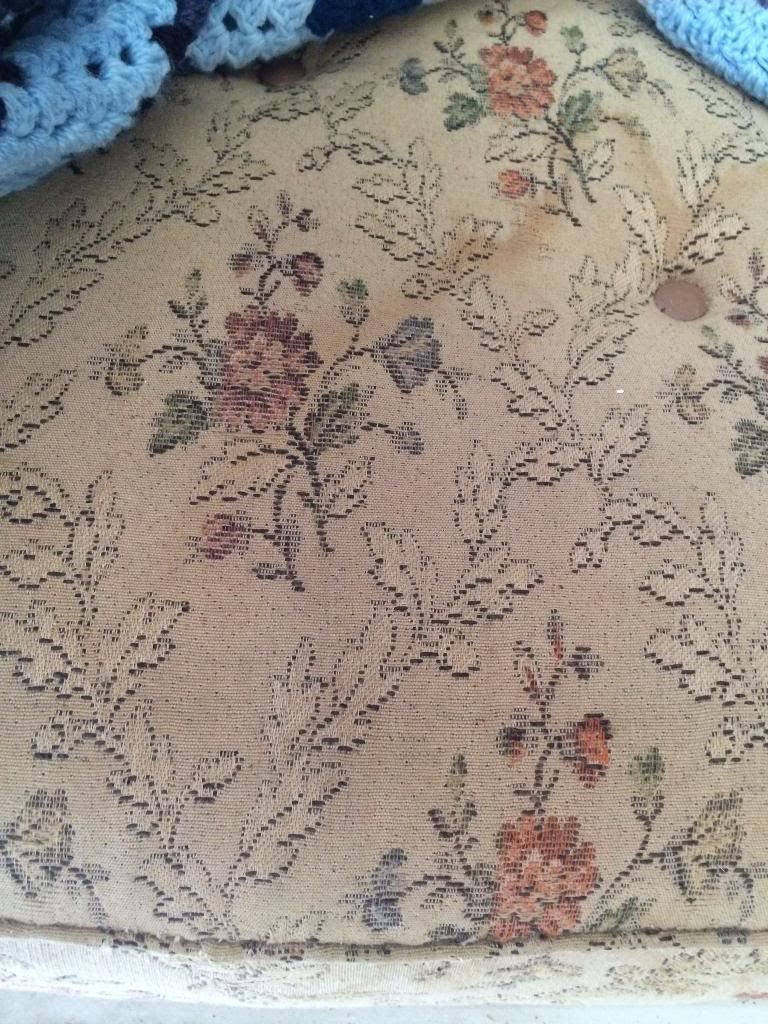 Jennisons cushions out of his 53 pathfinder 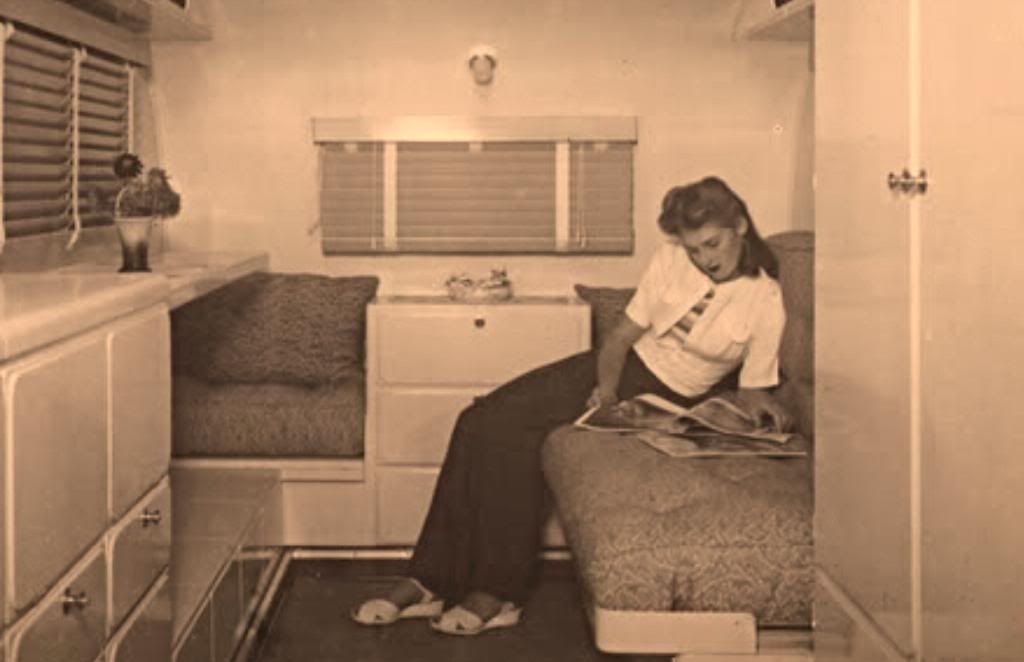 Interior promo shot showing cushions ( some look mix and match) |
|
|
|
Post by Franklin1 on Jan 29, 2014 18:47:36 GMT 10
G'day Andrew, I was in our main local Salvos store recently, and I came across a number of those 'books' of upholstery fabric swatches that the shops would bring out to show customers what was available. Obviously the books in the Salvos were all redundant samples, but it got me thinking about whether furnishing shops would have any leftovers of these old fabrics still lying around at the back of their warehouses. Who knows, maybe the oldest fabric store in Tassie still has some fabric from when Captain Cook sailed over.   The other piece of research to keep in mind is that Trove have digitised all the Australian Women's Weekly magazines from 1933 up to 1982, and you can look through each magazine if you wish. I use them to get a feel for patterns and styles of furnishings from the various time periods. (and I also use them to pinch a copy of the 1960 calendar off the back of one magazine to hang up in my van   ) See here: The Australian Women's Weekly (1933 - 1982)cheers, Al. |
|
|
|
Post by akeepsake on Jan 29, 2014 21:11:11 GMT 10
Thanks Al I have the original cushion as a reference will just have to keep an eye out . Will check out the WW link
Cheers
|
|
|
|
Post by akeepsake on Feb 5, 2014 20:53:25 GMT 10
Well the back is on the mend so decided to get cracking on some repairs! The hatch screen hinged access door was attached to a replaced piece of timber which wasn't real timber , it was CHIPBOARD! Very shoddy repair ( sorry Frank  ) you can imagine what the weather had done to it! I replaced it with a nice piece of hardwood !   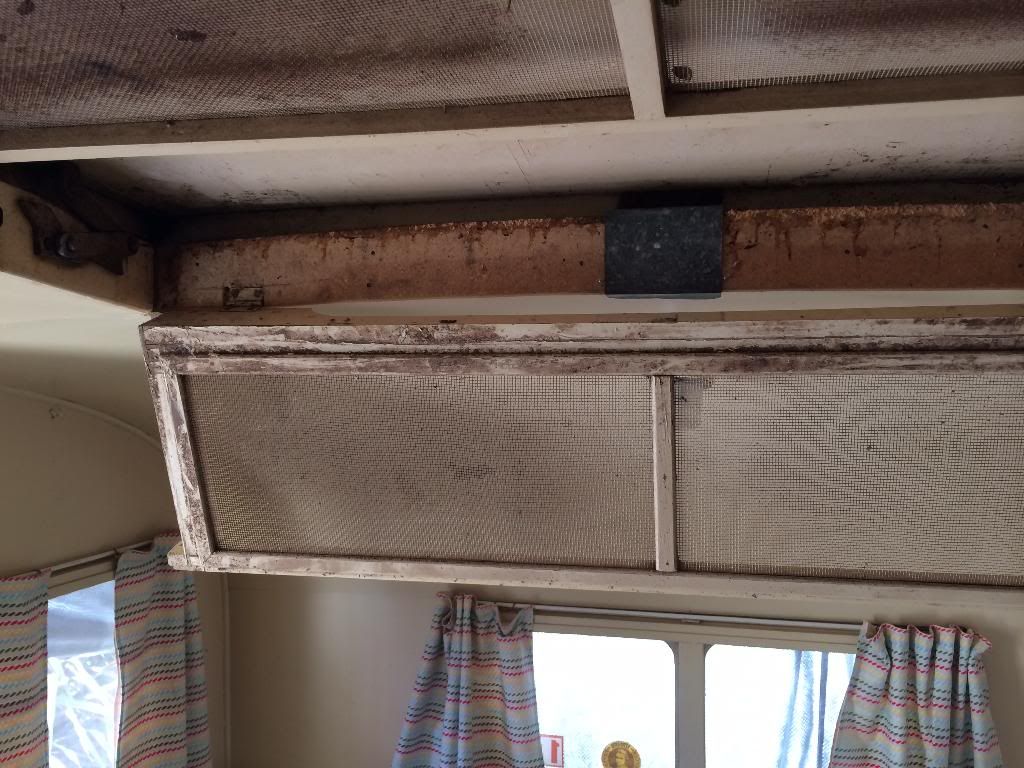 Before! 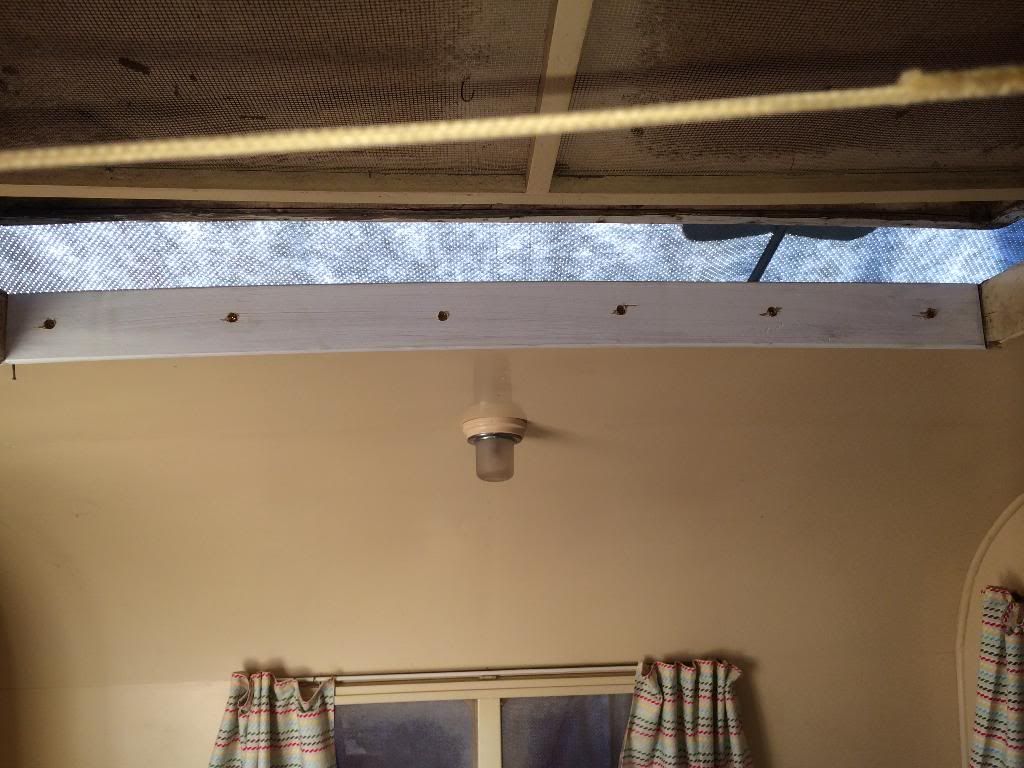 After!  Removing the old piece revealed the original canvas which proved that it hadn't been replaced as there was no signs of tampering etc Jack was certain that te roof canvas had been redone but I think it was more the case that it had been repainted with the silver aluminium based paint. 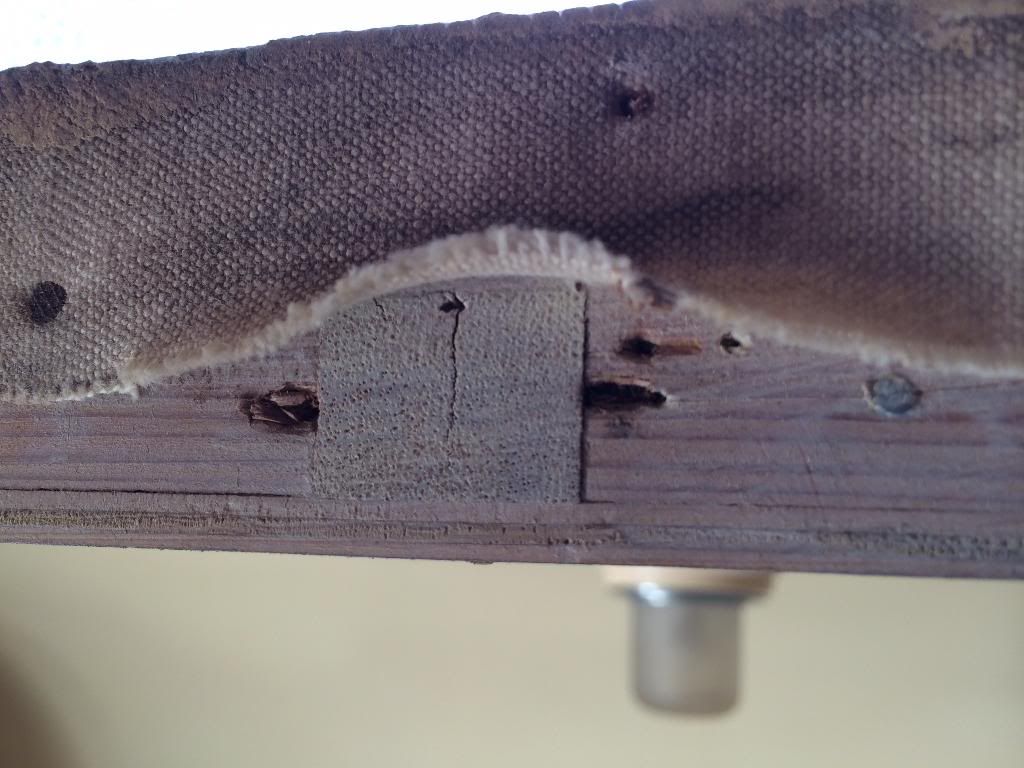 Original roof canvas! I really am amazed at the condition of the old girl (and the caravan too!)  I have been thinking long and hard about paint and I am leaning towards gloss acrylic , most likely Haymes Solarguard as it is very flexible and will retain its shine longer than enamel . Am I barking up the wrong tree?  the exterior won't need to be stripped back to bare timber as it is very sound an will only need feathering in some spots then about 3-4 coats to give it a great finish ! Looked into the Norathane but it's very expensive and hopefully it won't be submerged in water  Would love your thoughts on this as very open to suggestions??? More to come !!! |
|
|
|
Post by griffin on Feb 7, 2014 19:14:03 GMT 10
Hi akeepsake
Lovely Jennison you have there  I was initially hopeful of finding one when I was searching for a van, but it wasn't to be. I was initially hopeful of finding one when I was searching for a van, but it wasn't to be.
I don't quite know what you are looking to use the Norathane for, sealing timber I guess, and I do remember someone using it a while back.
On my bondwood the roof fabric had never been sealed onto the ply, it was just painted, numerous times, and when I got it the paint was cracked and able to be peeled off in sheets leaving me with the original material. It was is reasonable condition and I wanted to keep it so I used Bondall Timber Sealer which I was initially painting on in an effort to get it to soak in to bond and seal the fabric. That was only partially successful so after some experimenting I injected the Bondall with a syringe between the fabric and the ply, and I could then push it about with a paintbrush and it has really done the job now. I applied another coat of Bondall to finish and I can happily chuck water on it which just pills up and runs off. It is not UV stable and needs to be painted.
The ply ends needed to be repainted and I've stripped the paint off and after sanding applied the sealant there too before painting. I got the Bondall from Bunnings, it's about $35 a litre or $68 for a 4 litre tin. I've used about 5l so far. Underneath I used Bondall clear marine vanish to seal the timber to save messing about painting it, my backs not up to too many trips underneath. Probably an unnecessary precaution given the wood survived in its natural state for the past 60 years  To satisfy my curiosity before I used it I painted a piece of cardboard with it and let it dry, then put it in a bucket of water with an untreated piece from the same box. The latter soon became water logged and sank, the treated piece floated for hours. I figure it will do what I need it to. Hope that might be of some use. George
|
|
|
|
Post by aussieute on Feb 8, 2014 17:25:33 GMT 10
looks like a great find andrew if you get the signs reproduced let me know as the paint was gone
on the front and back on my van so nothing to copy off will try to post process of how van going soon
were you the one bidding on ebay when mine came up for sale cheers chris
|
|
|
|
Post by akeepsake on Feb 8, 2014 23:18:23 GMT 10
Thanks George ! Very lucky to secure the Van! To my knowledge I haven't seen another bondwood Jennison in existence but never say never !
Your homade is quite a van ! I remember seeing it when it first turned up. It sounds like you have been very thorough with the waterproofing of the roof etc.
My canvas is in good nick so I think just a light rub with a scourer and then a undercoat and a couple of topcoats should sort it I was thinking of using norathane two pack on the roof and walls but now have reconsidered the idea
Aussieute I did see your Jennison on eBay but due to the stretch of water I didn't bid and gave it a miss. It'll be a ripper if you can get it back to original you will have a cracker van !
Unlike your badges which are cast metal mine are painted on. If you message Jennison you may be able you get a moulding and make some?? There just isn't many around for spares!
I would be interested in some pics of your hatch catches and how it is secured as mine had hinges but no securing latch arrangement only a rebate in the timber where it was??
Cheers Andrew
|
|
|
|
Post by akeepsake on Feb 15, 2014 23:50:09 GMT 10
Well I thought it was about time to sort out some exterior colours for the old girl. My intention is to paint it the same as it rolled out of the factory in the summer of 49 ( reminds me of a song???) The only colour pic I have at the moment showing original livery is an iphone shot of a slide which had me a bit perplexed ?? You see I had already determined by scraping back the blue paint that the original colour was cream with a blue waist stripe , signwritten logos front and back and painted spats.done deal! ...NO   What perplexed me in the above pic was the two tone cream . The roof would have to be nearly white to match what was on the sides ?? Anyway I decided to take off the front clearance light wooden mounting ring and this is what I found... 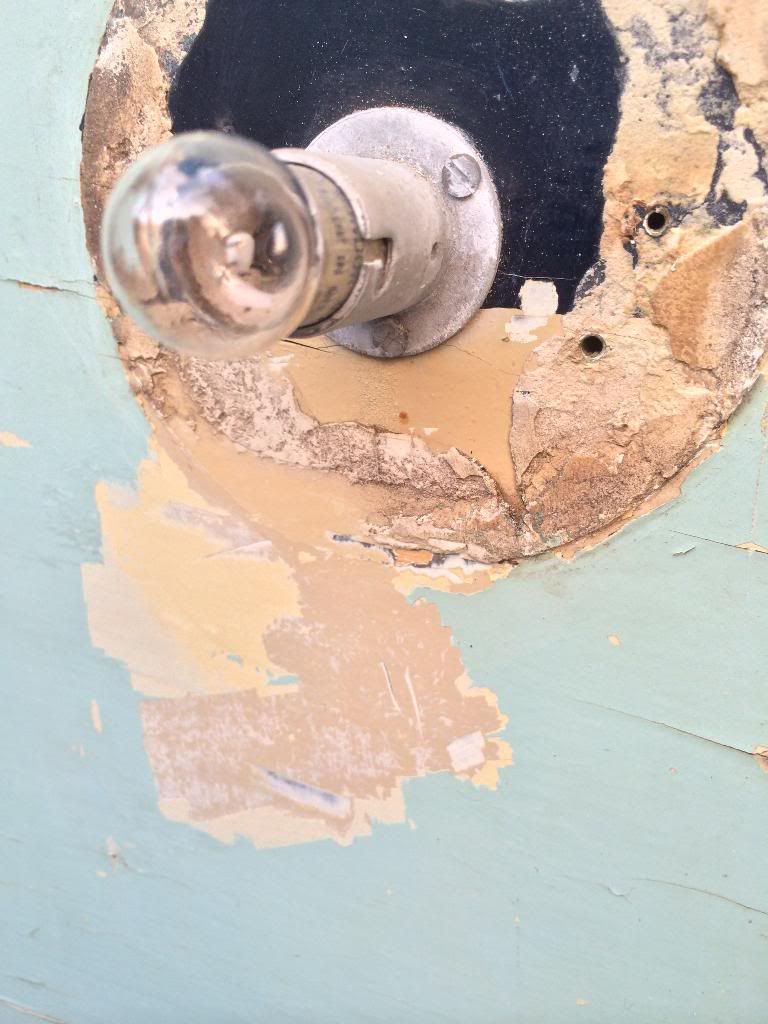 Under what I thought was the original yellow was this colour which when you look at it works with a cream roof . I would say that sometime someone has painted the rest of the van the same colour as the roof On further investigation I found in Jennisons post of the 48 pathfinder pamphlet shows the colours as below 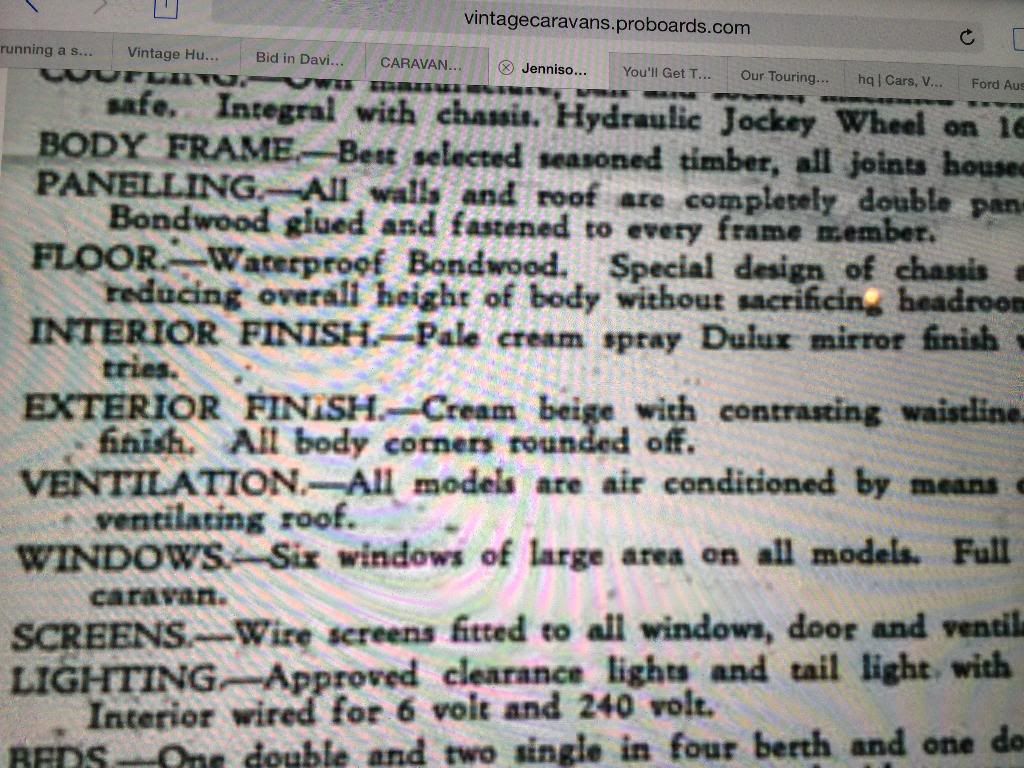 Cream beige must be cream roof with beige walls,front and back!!!  It had been staring me in the face when I had another look at the wheels which were painted yellow before the blue but where the hubcaps covered ..bingo original colour 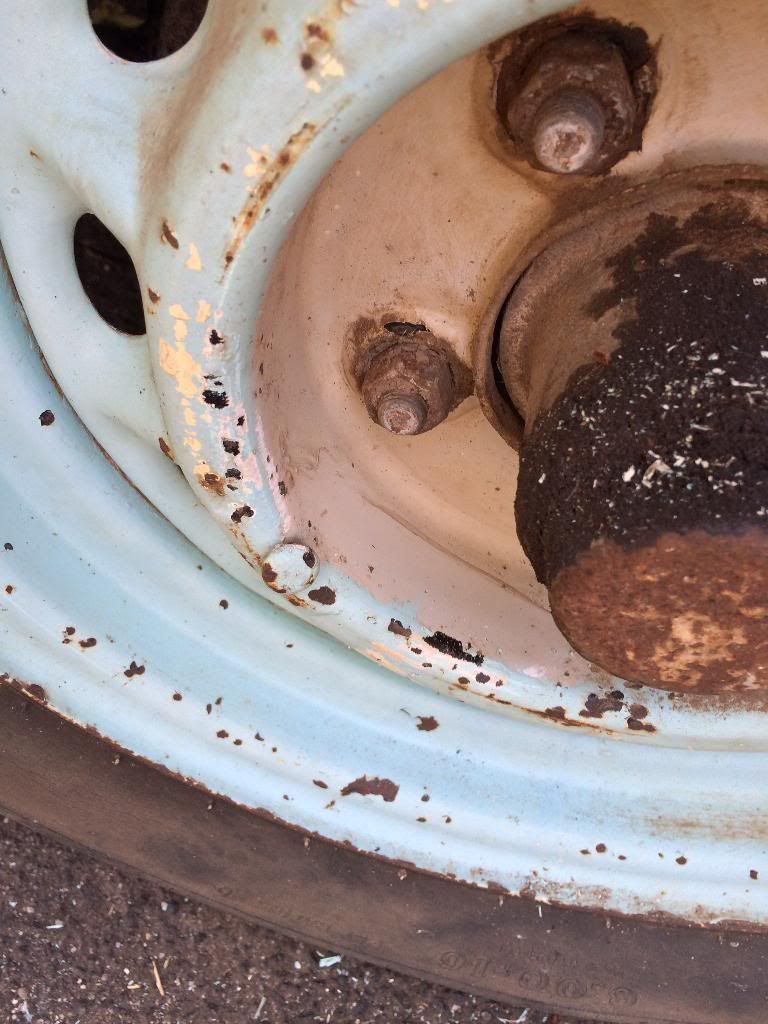 Off to get some paint!!! |
|
|
|
Post by Don Ricardo on Feb 16, 2014 15:08:59 GMT 10
Hi Akeepsake,
Your thread on the 1949 Jennison is fascinating, and its great to read about each discovery you're making, or process you're thinking through, as you go along. One of the current threads on the forum that's compulsive reading as far as I am concerned!
For what it's worth (which may not be much), my guess is that 'cream beige' would have referred to a single colour (ie a particular shade of cream or beige, depending where you were starting from), rather than two colours - otherwise I think they would have said 'cream and beige' or specified what was cream and what was beige. However, looking at the publicity shots I can see what you mean - the roof does look a bit lighter than the sides...and you do have the evidence of what was at the bottom of the various coats of paint.
Maybe, Seeshell - who comes up with all sorts of interesting info about decorator and chemical type issues - knows where you could access some (say) Dulux colour charts from the late 40's to see whether 'cream beige' is a shade of one colour or two separate colours?
Don Ricardo
|
|
|
|
Post by seeshell on Feb 16, 2014 19:57:53 GMT 10
Hi Akeepsake and DonR I wonder if it's at all good to be known as the local chemistry geek? Hmm! Paint in the 1940sMost decoration pre- and post-WWII remained relatively consistent. Apart from there being materials shortages for some time and the need for industry to "switch over" from wartime production to commercial production, there is a known phenomenon in colour trends that is interesting but not surprising. People tend to be more conservative in times of trouble or austerity, and bit more freewheeling when things are going well. Just coming out of WWII, there was a period until the early 1950s where colours remained largely unchanged from the 1920-30s palettes. In fact, if you look at the lino in some of the vans, or kitchens of the period, the patterns are still the same from then with only slight changes to the colourways. Moderne Colour Trends (1920-1940s)In the 1940s, which is sometimes called the Moderne period (post-Deco, pre-Mid Century Modern), people favoured colonial blues, dark forest green, brick red and other neutral sand, brown, peach and cream shades. 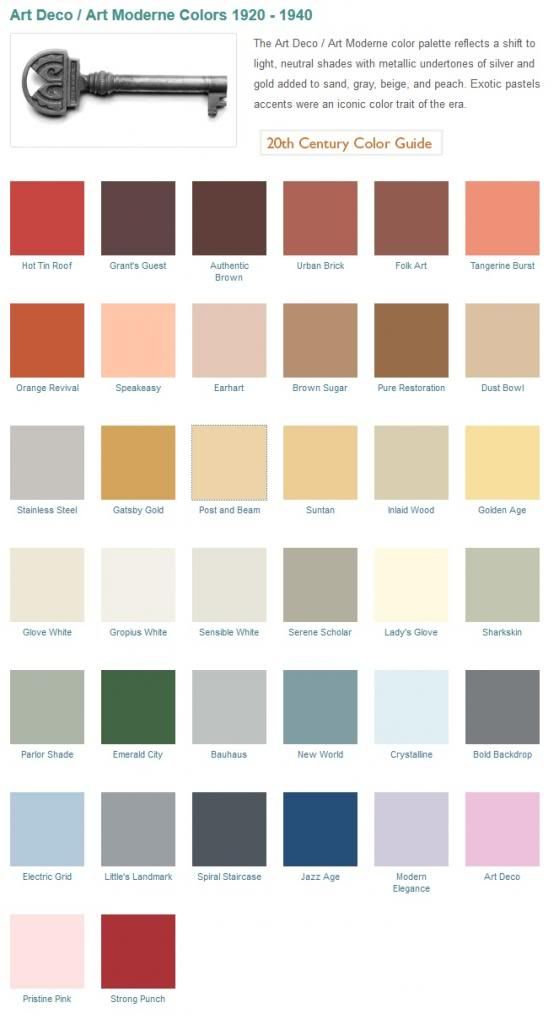
Mid Century Colour Trends (early 1950s - 1960s)From the early 1950s on, the colours brightened and became more exuberant as the overall optimism of the period influenced decoration, and industry was geared up again to meet those desires. 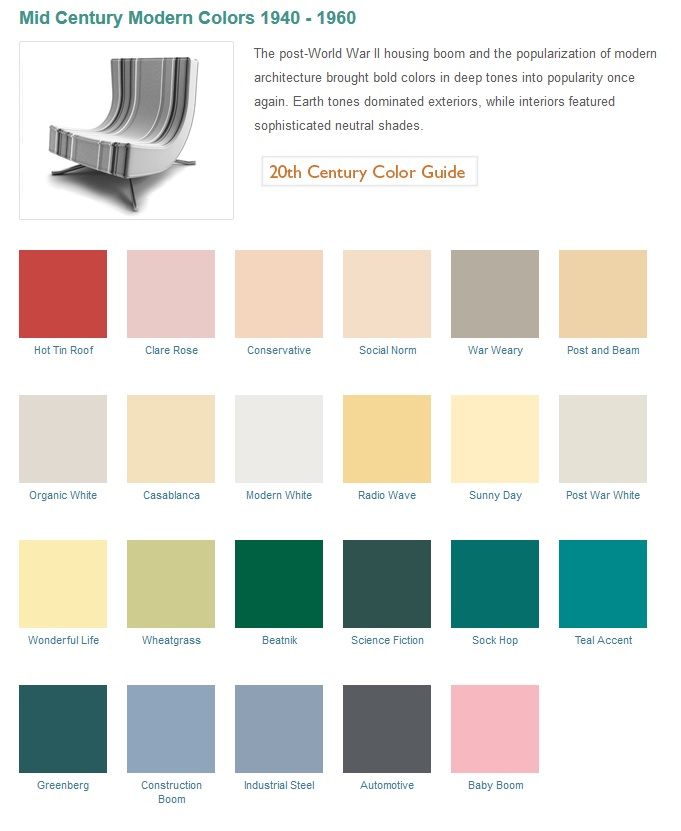 Historically Accurate Paint Combinations Historically Accurate Paint CombinationsDon said I might be able to point you to some paint chips or a colour chart from the period - as it turns out they are VERY rare. And of course most of the paint suppliers of the period are well gone now, as is the ephemera like paint chips and colour charts. However there has been some excellent research done on old unmolested houses of the period by historical societies, and California Paints has taken all that and turned it into a validated palette of each period (shown above). If you're interested in a further peek, you can find the link here: California Paints 20th Century Colours linkOne other good source of colour trends of the period are the much more available "style books" which were catalogs showing different home decorating ideas, mainly developed by paint or flooring companies. I've included a page from a paint company style book from the 1940s that I think is pretty relevant to you. In the period, colour trends made their way out to Australia from the US (the UK was much slower, as it was still on rationing and austerity into the early 1950s) with a short delay. Therefore, in 1949, it's quite likely that your van was using a Moderne palette - much like the one in this late 1940s kitchen. This was from a paint supplier - and showed schemes that were on the cutting edge of the modern home. You will note this page mentions cream and buff, and this combination was VERY popular (unlike now, where people tend to favour higher contrast paint schemes). Though I hate to do it, I will depart from Don's view it was a single colour. I suggest that your van was painted in two colours, along these lines - and they made mention of it in the advertisement because it was so "in vogue". 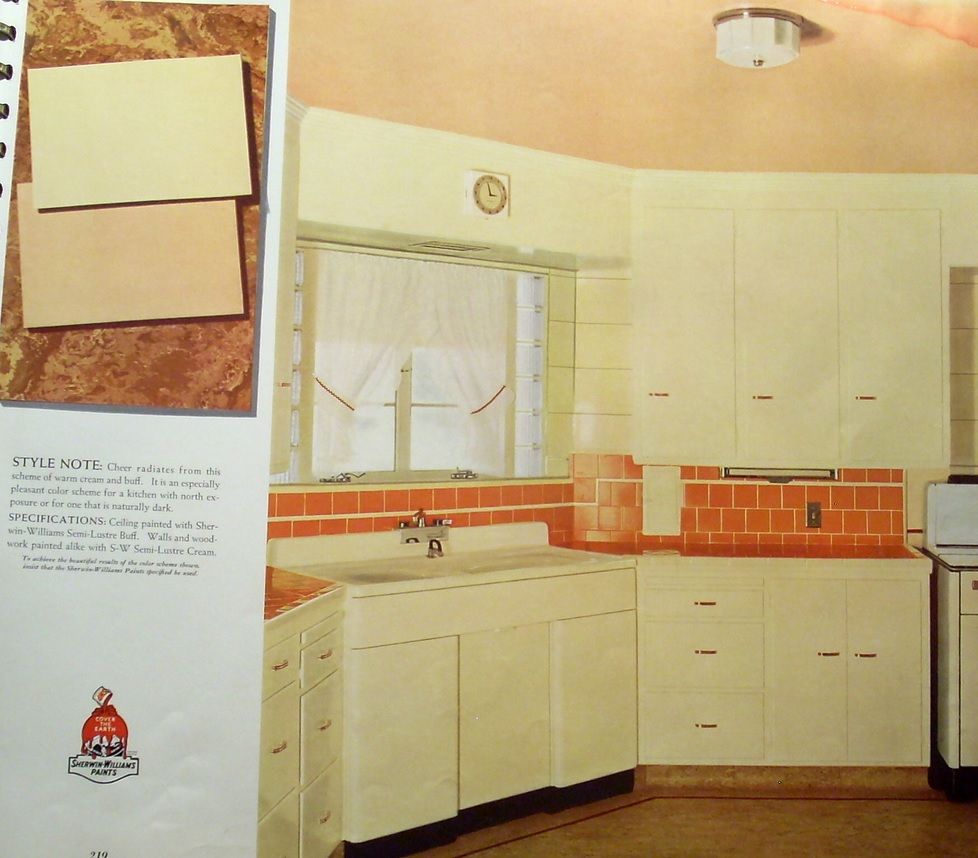 Hope that helps. Cheers, Seeshell |
|
|
|
Post by Jennison on Feb 16, 2014 21:11:53 GMT 10
I must echo donRs comments Andrew, it's great to see such a detailed thread on a new resto running again especially with your passion to keep it original. And especially on a bond wood pathfinder to boot!!Keep the step by step posts coming mate. Jenno
|
|
|
|
Post by Don Ricardo on Feb 16, 2014 21:27:23 GMT 10
I wonder if it's at all good to be known as the local chemistry geek? Hmm! Well Seeshell, Maybe you are not too sure about the benefits of being typecast as the local chemistry geek, but I can tell you that the rest of us appreciate your knowledge and ability to come up with some amazing and very helpful information, as you have in this case. And I don't mind at all your departing from my view.    To tell you the truth I was beginning to depart from it as I was writing it!    I was actually just approaching the matter from a semantic point of view - colours are often described using two words (as shown in a number of instances on the colour charts you referenced), so I was wondering why "they" (Jennison's grandfather in this case) would use 'cream beige' (which very well could be the name of a single colour) if it meant 'cream and beige'? Guess we'll never know, eh? Don Ricardo (who is sometimes known as a geek himself, but not in chemistry!)       |
|
|
|
Post by seeshell on Feb 17, 2014 6:45:21 GMT 10
Hi Don
Ah, I'm only funnin! I wear my geek badge with pride. Clearly the change to the forum means some of the 'smileys' don't work anymore - somehow it fell off my post leaving it sounding too serious! Ah well.
As for the two names, I wonder if in the shortness of the advertisement they overlooked or sacrificed a comma, a slash ("/") or an "and" for brevity - as you might do when ads cost by the line? A bit like the text speak of today? Gr8! Or it just got overlooked in typesetting which was done by hand of course.
I also meant to mention why there were very few pure white or bright colours until the 1950s. In part this was because pure white and brights of the time required chemicals that were in low supply during and post war. These included magnesium oxide, titanium oxide, and phosphorous used in munitions as igniters. In the liberation of Cherbourg, nearly 12,000 phosphorous bombs were used in a few days - so it's kind of easy to see how that ended up with local shortages!
Interesting how availability of things influenced fashion, hey?
Cheers
Seeshell
|
|
|
|
Post by Don Ricardo on Feb 17, 2014 22:12:30 GMT 10
Hi Seeshell and Akeepsake,
Seeshell's comments about colour palettes, the use of cream, the lack of pure white, and the influence of non-design factors on fashion, reminded me of this comment from Robin Boyd in The Australian Ugliness when talking about the dominance of the colour cream in Australian design:
"The cream Australia policy lasted for some twenty years, trailing off slowly after the Second World War. For the whole of that time cream was used habitually where other nations would have used white. Most kitchen equipment was not procurable in white enamel. As late as 1955 English manufacturers of stoves and other household appliances and sanitary-ware made special cream models for export to Australia."
The 'cream Australia policy' was certainly evident in Australian caravan design between the wars and right up to the mid-50's! The Jennison is an example of that Akeepsake (providing that you call beige a variation on cream!), as is our Don. After WW II you could get a Don in any colour you liked, providing it was cream, and I think the Jennison was much the same at least until the early 50's from what I've seen.
Don Ricardo
|
|
|
|
Post by akeepsake on Feb 17, 2014 23:50:57 GMT 10
Thanks guys for all the great feedback and thoughts re colour . It's really appreciated . My endeavour is to take the time to get it right and it's the small details that add up to a great and satisfying result. Talking to Jennison on the phone yesterday his 53 PF was originally painted beige ! I will get paint matched to the unfaded area under the clearence lights and match the cream roof best I can as iis hard to get a decent patch to match from! I am hoping to get some original pics from Gwen ( previous owner) so can't wait to post them ! Thanks again for the help !  |
|